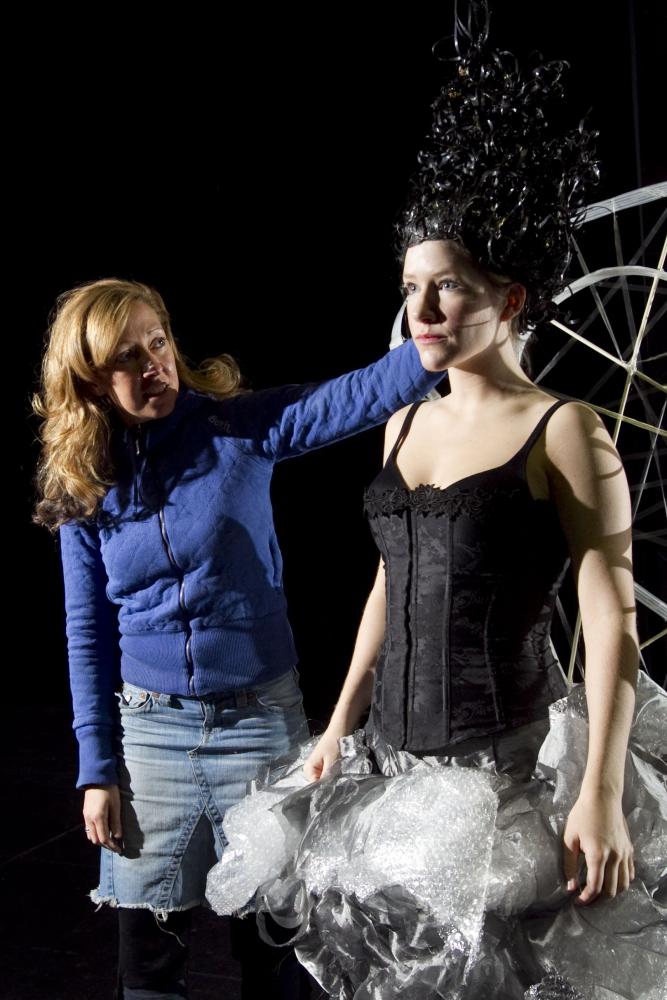Tucked in the corner of a dark, curtained maze behind Catalyst Theatre’s mainstage lies Bretta Gerecke’s workshop. On this late November day, the company’s resident designer is pasting tiny, coloured shards of lighting gel to a drawing of the rose window – a feature image in Victor Hugo’s The Hunchback of Notre-Dame. Gerecke says she’ll have to work on the mock-up while we talk about Hunchback, the anticipated new musical that she and Catalyst’s artistic director, Jonathan Christenson, conceived.
Hanging overhead in the rafters is a huge, funnel-shaped twisted wire and white foam wrap. It was supposed to be a skirt for one of the characters, Gerecke says. But it’s not going to work – not as a skirt, at least.
“Now it’s going to be something else,” she says, looking up at the bizarre conglomerate of craft material. Like the rose window, it’s a work in progress. But Gerecke’s not worried about it. Behind her pensive look, the esthetic world for Hunchback evolves constantly.
For the past 15 years, Christenson and Gerecke have produced what they call “small-scale spectacle” musicals under the Catalyst banner. Their shows, which Christenson writes to appear like a monster’s dreams, come alive through Gerecke’s distinctive, otherworldly designs.
Though most companies mount only a handful of shows each season, the Catalyst players focus on one work for, well, as long as it takes. (They did try six new shows in their first season and it nearly killed them, Christenson laughs.) He and Gerecke, even now, talk about adjustments being made to Nevermore: The Imaginary Life & Mysterious Death of Edgar Allan Poe, which first debuted in fall 2008 in Fort McMurray. A year later, the show took London and New York audiences on an intensely tragic, macabre ride through the life of the famed American writer.
“When it closed at the New Victory, Nevermore was the most tweeted-about show to date,” notes Mary Rose Lloyd, director of programming at the New Victory Theater in Manhattan, which presents innovative family theatre for New York’s young audiences. “Catalyst really struck a chord. What we’re looking for at New Victory is work that’s intelligent and compelling and surprising, and it ticked all of those boxes. I was just transfixed,” she says. “Personally, I can’t wait to see Hunchback. I will be the first in line.”
